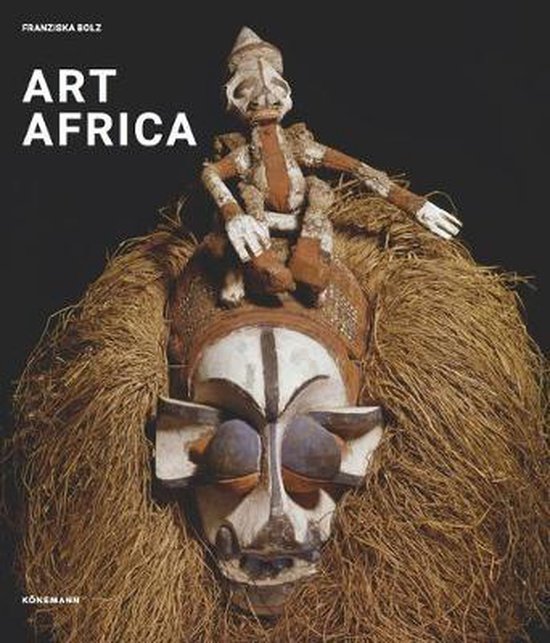
Masques
En Afrique noire, supports privilégiés des actes rituels, les masques apparaissent lors des cérémonies importantes : cultes des ancêtres, des morts, rites d'initiation ou de fertilité. Une ample iconographie et l'apport de chercheurs et d'historiens d'art montrent l'extrême diversité des masques, tant du point de vue des formes que des fonctions. Simples ou complexes, heaumes ou cimiers, ces objets ont perdu, pour la plupart, leurs extraordinaires costumes de fibres, de feuilles ou de plumes. Naturalistes, parfois zoomorphes ou stylisés à l'extrême, seuls les visages demeurent.
Le premier ouvrage de synthèse sur le sujet est dû à Leo Frobenius : « Les Masques et les Sociétés secrètes », paru dès 1898, mais inédit en français. Il contient un large inventaire des masques d'Afrique qui étaient déjà entrés, il y a plus d'un siècle, dans les principaux musées européens. Nous publions ici « Présentation ethnologique », la deuxième partie de l'ouvrage, qui conserve un grand intérêt : de nombreuses pièces reproduites ont été détruites ou ont aujourd'hui disparu. L'étude du masque dans ses aspects fonctionnels et plastiques permet d'appréhender l'origine des thèses du grand ethnologue sur l'unité culturelle de l'Afrique, tout en témoignant de sa reconnaissance de la valeur des civilisations africaines.
In black Africa, privileged supports for ritual acts, masks appear during important ceremonies: cults of ancestors, deaths, rites of initiation or fertility.
A large iconography and the contribution of researchers and art historians show the extreme diversity of masks, both from the point of view of forms and functions. Simple or complex, helmets or crests, these objects have lost, for the most part, their extraordinary costumes of fibers, leaves or feathers. Naturalistic, sometimes zoomorphic or stylized to the extreme, only the faces remain.
The first work of synthesis on the subject is due to Leo Frobenius: "The Masks and the Secret Societies", published since 1898, but unpublished in French. It contains a large inventory of African masks that had already entered the major European museums more than a century ago. We publish here "Ethnological Presentation", the second part of the book, which remains of great interest: many reproduced pieces have been destroyed or have now disappeared. The study of the mask in its functional and plastic aspects makes it possible to apprehend the origin of the great ethnologist's theses on the cultural unity of Africa, while demonstrating his recognition of the value of African civilizations.
Le premier ouvrage de synthèse sur le sujet est dû à Leo Frobenius : « Les Masques et les Sociétés secrètes », paru dès 1898, mais inédit en français. Il contient un large inventaire des masques d'Afrique qui étaient déjà entrés, il y a plus d'un siècle, dans les principaux musées européens. Nous publions ici « Présentation ethnologique », la deuxième partie de l'ouvrage, qui conserve un grand intérêt : de nombreuses pièces reproduites ont été détruites ou ont aujourd'hui disparu. L'étude du masque dans ses aspects fonctionnels et plastiques permet d'appréhender l'origine des thèses du grand ethnologue sur l'unité culturelle de l'Afrique, tout en témoignant de sa reconnaissance de la valeur des civilisations africaines.
In black Africa, privileged supports for ritual acts, masks appear during important ceremonies: cults of ancestors, deaths, rites of initiation or fertility.
A large iconography and the contribution of researchers and art historians show the extreme diversity of masks, both from the point of view of forms and functions. Simple or complex, helmets or crests, these objects have lost, for the most part, their extraordinary costumes of fibers, leaves or feathers. Naturalistic, sometimes zoomorphic or stylized to the extreme, only the faces remain.
The first work of synthesis on the subject is due to Leo Frobenius: "The Masks and the Secret Societies", published since 1898, but unpublished in French. It contains a large inventory of African masks that had already entered the major European museums more than a century ago. We publish here "Ethnological Presentation", the second part of the book, which remains of great interest: many reproduced pieces have been destroyed or have now disappeared. The study of the mask in its functional and plastic aspects makes it possible to apprehend the origin of the great ethnologist's theses on the cultural unity of Africa, while demonstrating his recognition of the value of African civilizations.
| Auteur | | Christiane Falgayrettes-Leveau |
| Taal | | Frans |
| Type | | Paperback |
| Categorie | |





